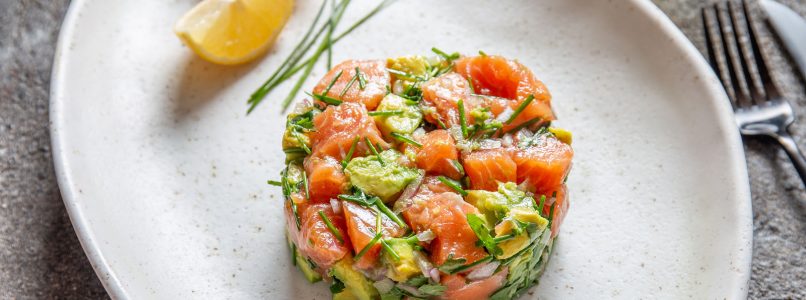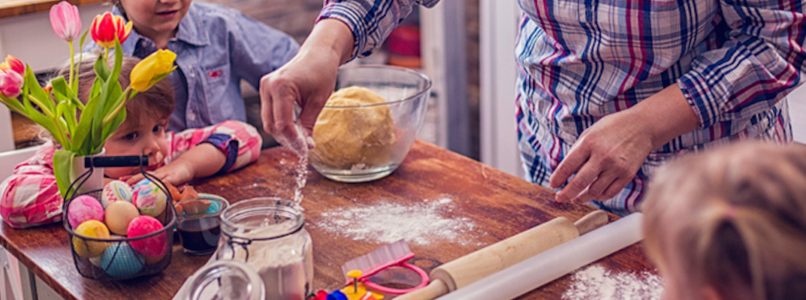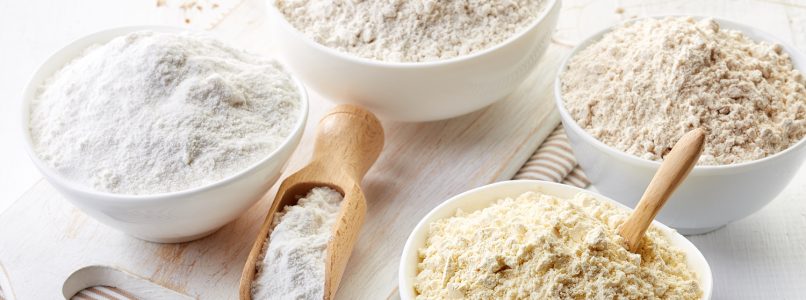Fished or farmed? With what origin and characteristics? Revelations and fake news about salmon, a food to choose with awareness
What are the differences between caught and farmed salmon? Which salmon should I buy for raw consumption? Is the indication wild salmon synonymous with superior quality? When we talk about salmon, there are many questions in search of a certain answer. Questions that deserve specific study in the interest of all, in order to be able to make informed purchases and sensible choices. To orient ourselves and extricate ourselves in a world of false beliefs, fake news and fragmented information, we asked the doctor Valentina Tepedino, Veterinary surgeon specialized in fish products, National contact person of the Preventive Veterinary Medicine Society for the fish group, Contract professor at the University of Veterinary Medicine of Bologna and national contact person for the Norwegian Seafood Council.
Norwegian salmon bred vs caught salmon. What are the main differences?
"Many consumers make the distinction between wild salmon and farmed salmon sometimes preferring one over the other without real knowledge of their differences. Few, however, are aware that for several years on the Italian market almost all the "Atlantic" salmon is farmed and almost all the wild salmon is from the Pacific. But above all few are aware that it is also about different fish genera and species. To be more precise, it should be pointed out that the family of salmonids includes different genera and species of what we simply call "salmon". In fact, the genus "Salmo" of the "salar" species is typical of the Atlantic Ocean, that is the one that has the mandatory name of "salmon" while the genus "Oncorhynchus" is typical of the Pacific Ocean, which includes different species with the different mandatory denominations of "Red Salmon", "Pink Salmon", "Royal Salmon", "Silver Salmon" etc. which have very different characteristics from each other. Except for the summer period where Pacific salmon can also be imported by air, the rest of the year this product arrives frozen and is mainly intended for companies that make smoked salmon. In fact, the Pacific salmon with the various names mentioned above is widespread especially as a smoked product in Italy. The Atlantic salmon that arrives in Italy, on the other hand, derives mainly from the breeding activities practiced by the countries of Northern Europe and largely from Norway. Most of them arrive fresh, both directly destined for sale in the fish counter and for the restaurant sector (including sushi and sashimi) and for companies that produce smoked products. I remember that on the label it is mandatory by law to report a series of information that is useful to make the consumer understand what I have said: the origin of the products (in the case of the raised product is the country where it was raised), the production method ( fished or bred) and the scientific and mandatory name ".
"For many years almost all the Atlantic salmon on the market have been farmed, as are more and more species such as trout, sea bass, mussel. Yet I still have the feeling that as far as the fish sector is concerned, the consumer wonders more often about the difference between farmed and wild, which is not the case, for example, for other farm animals. Nobody, I believe, is looking for wild pig or beef or is asking this kind of question for these animals. Indeed, breeding for these latter species has become synonymous with hygienic and quality assurance on various fronts including that of nutritional and sensorial value which, with ever more advanced production technologies, no longer reveal significant differences between the species bred and their respective savages. In the rest of the interview I will explain the substantial differences which, I repeat, are not to be found in the final result and therefore in the salmon meat but in the production system, which for obvious reasons in the farm is one type while in the wild it is another . To be more precise in the breeding of salmon, the entire production cycle is under strict control by man from breeding animals, juveniles, feed, management of floating cages at sea, well-being … everything is constantly monitored, controlled, recorded . The main advantage of farmed salmon – as of farmed products in general – is that the quality of the production cycle and of the finished product can be easily checked and assessed from all points of view (nutritional aspect, well-being, water quality, feed composition, sanitary situation regarding heavy metals, dioxins, parasites, etc., environmental and social aspects, etc.). This so effective control that can be had for the farmed product is positive and not negative because it allows producers, official controllers and consumers to have a food product within certain parameters that we could define as standards. In fact, many distributors then started promoting the aforementioned as "quality standards" defined on specific production specifications. Wild salmon, as the adjective itself says, is a fish that is born and grows independently and without any control by man and therefore when it is caught, nothing is known of its production cycle or of what it has eaten or of the waters in which he lived. The most obvious difference compared to the farmed animal is that only after capture can a series of tests be carried out on the same to verify the hygiene and health safety of the product (compliance with the limits for contaminants, absence of parasites transmissible to humans, etc.). On the contrary, from a nutritional point of view, numerous scientific researches have not revealed significant differences between a wild salmon and a caught one .
Farmed Norwegian salmon contains less contaminants than fish caught. Because?
“Farmed salmon have a controlled cycle in all aspects. The factors of the production cycle mainly responsible for a potential future presence of contaminants in salmon meats are the feed and water quality of the production site. Therefore it is logical that if the farmer keeps these factors monitored, the salmon produced will have already safer meats than these aspects which are constantly checked by the official control bodies and which must be absent or under certain parameters by law, both in the products caught and bred. The hygienic-sanitary safety of all food products that arrive on our tables is a pre-requisite .
Norwegian salmon is the only one in the world that can be eaten raw. Because?
"The production cycle in a farmed salmon is strictly controlled by man. Numerous studies have shown that the risk of "parasites" in farmed fish and, in particular, the risk of being able to transmit Anisakis to humans is negligible. This is because farmed fish comes fed with heat-treated and therefore safe feed in this respect. Anisakis is transmitted in nature from fish to fish through nutrition, that is, when a fish eats other marine organisms that have Anisakis larvae. For this reason, in general, compared to wild fish, farmed fish is safer. In any case, farmers must then "certify" this absence if they want to market products that do not require freezing / chilling to be eaten raw, as required by law. In Norway, the majority of producers supply salmon already certified on this aspect, that is, as safe as regards anisakis, and therefore there is no need to freeze it ".
What do salmon farmed in Norway eat?
"The feed fed to the salmon is dry in pellet based on oils and proteins of vegetable and fish origin (obtained from fish species not suitable for human consumption and widely available, which provide marine fats, high quality proteins, vitamins and minerals). Also with regard to feed, I add an intervention by Prof. Parisi of the University of Florence that helps to better understand the results in terms of environmental, economic and value sustainability of the finished product: “It is true that, for a reason of sustainability environmental of the breeding process (and obviously for economic reasons) the diet of farmed fish has undergone important changes in the last decades, replacing but only partially the fish flour and fish oil, but the presence of the two mentioned Omega 3 is also essential for the fish and must therefore be guaranteed in the feed given. The research, since the 70s of the last century, has been trying to identify ingredients and mix of ingredients to be used in the feed formula to replace conventional and optimal ingredients for carnivorous fish (fish oils and flours), with the aim of not sacrificing performance in life and not to worsen the nutritional quality of the product. It is important to guarantee the presence of Omega 3 and maintain an adequate ratio between Omega 3 and Omega 6 ".
Are Antibiotics Used When Breeding Norwegian Salmon?
"According to the latest report of the European Medicines Agency in this regard, Norway turns out to be an example of effective fight against antibiotic resistance in food production. The latest data on controls on farmed salmon now show that antibiotics are not used for this production and that Norway ranks first on this target. This is because in Norway they have been vaccinating successfully for many years now .
Why is aquaculture more sustainable than fishing?
"Aquaculture is more sustainable to meet the important demand for fish products that is present in the world today. Over-exploitation of the oceans over the past century has significantly reduced fish stocks; only the continuous development of aquaculture will allow to meet new needs, but it is necessary to find an adequate, complete and healthy food source for farmed fish, which obviously cannot be covered with fishing resources. For this reason, in recent years, scientific research and innovations are multiplying to make fish farms more and more sustainable, also improving the quality of products. In addition, the other advantage of aquaculture is that fish is only taken from the cages after the customer's request and in this way the waste of unsold or unsold fish products is limited. Another advantage is also the organization, as Norway does, for the collection of processing waste which is then used for the feed, cosmetic, pharmaceutical, etc. sectors. in the name of a circular economy ".
Below, more answers to three salmon FAQs!
- What are the nutritional values of farmed Norwegian salmon?
The nutritional supply of Norwegian salmon reared is perfectly in line with the needs of modern nutrition: low in saturated fats, but rich in Omega 3 polyunsaturated fatty acids, salmon contains significant quantities of vitamins A, D, B12, essential for development skeletal in children and to strengthen the nervous and visual system. Salmon, in particular, is very rich in fatty acids known as "Omega 3": a portion of fresh salmon of 150 g brings about 2.5 g of Omega 3, well over the 500 milligrams indicated by international guidelines as a daily ration optimal necessary to ensure a condition of well-being. So, with two portions of salmon it is possible to cover the average need for these fatty acids for a week.
- Salmon contains Omega3. What does this statement mean? Why is it important to take it?
Omega 3s are fatty acids with a rather complex molecular structure, endowed with a large number of favorable effects on our body. In nature there are essentially three types: EPA and DHA (the two "longer" molecules), which are found mainly in fish, and ALA (the shorter molecule), which is also found in many plants, like nuts, some seed oils, some vegetables. In addition, the effects of these two Omega 3s in our body are different: EPA (technically "eicosapentenoic acid") represents the basic principle for the body to produce particular molecules (the so-called "eicosanoids"), with anti-inflammatory action , vasodilating, antiplatelet. Its role is therefore important especially in the prevention of many diseases, and specifically of cardiovascular diseases and degenerative diseases such as Alzheimer's. DHA (technically "docosahexaenoic acid"), on the other hand, is above all an essential structural component of many noble tissues in our body, and especially of the nervous tissue. Salmon, which contains a total of over one gram of long-chain Omega 3 per 100 g of product (and over 2 grams in farmed salmon), provides both a higher quantity of more "structural" Omega 3, namely DHA ( and is therefore particularly suitable for feeding children, in whom the noble structures rich in DHA are still in the development phase) and EPA, more "cardioprotective", especially important for adults, in whom also the control of the factors of Cardiovascular risk takes on a specific and important meaning. There is a particular situation and age in which Omega 3s have a function that is fundamental for the human organism: they are pregnancy and the first years of life. Pregnancy and breastfeeding are in fact the two phases of life in which a contribution of polyunsaturated fatty acids (in particular Omega 3) must be adequate, in order to allow optimal development of the fetus and regular growth of the newborn. The function of polyunsaturated fatty acids in the development of the fetus is to regulate the growth process; in particular, Omega 3s play an important role in the development of the central nervous system. In the last trimester of pregnancy there is a progressive passage of polyunsaturated fatty acids from the maternal side to the fetal one, known as the process of biomagnification: this is the reason why the premature baby is born with a pattern of long chain polyunsaturated fatty acids lower than the term infant. Among the favorable effects of Omega 3 it should be remembered that their regular consumption also tends to facilitate the achievement of the "normal" duration of pregnancy, reducing the risk of premature birth and, according to some data, also of early terminations of pregnancy.
- Why are Norwegian fjords a suitable environment for salmon aquaculture?
Norway, with 101,000 km of coasts, has suitable conditions for both coastal fishing and aquaculture facilities. The cold, crystal clear and protected waters are the optimal feeding conditions and offer excellent opportunities for the development of fish. Norwegian salmon (both wild and aquaculture stocks), air-dried cod from the Lofoten islands and crabs on the docks of the port of Trondheim testify how Norwegian coasts, islands and fjords provide a solid source of livelihood not only for many and small communities that exist in Norway, but in recent decades also to the whole of Europe and beyond. The Norwegian aquaculture industry follows a sustainable development model. The Norwegian aquaculture sector and the authorities take environmental challenges seriously and share the responsibility for the protection and sustainability of the sector. The Norwegian fisheries authorities have the primary responsibility for ensuring socially, economically and environmentally sustainable fish production. The fish breeding industry in Norway is subject to strict regulations. A constant goal of this sector is to minimize the environmental impact and keep it within sustainable limits. To become the world leader in aquaculture, Norway has relied on a set of strict health standards, careful monitoring and continuous commitment to the development of the sector.


